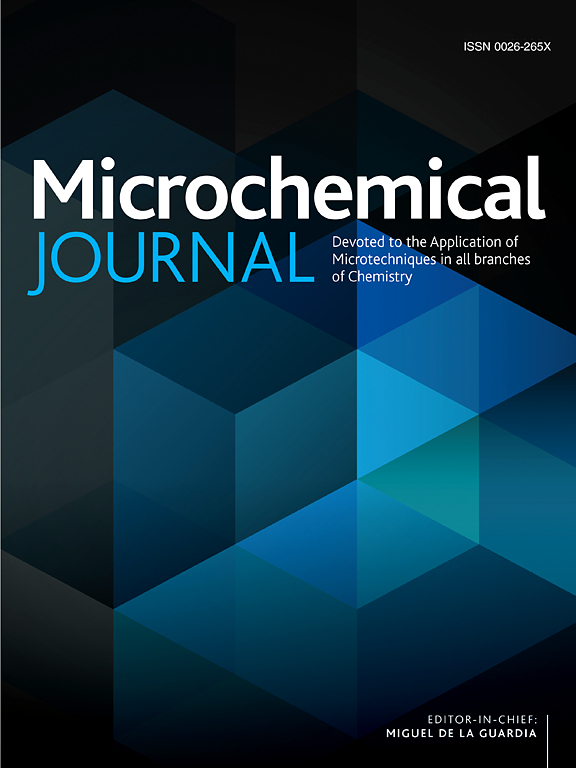Recent developments in luminescence MOFs based sensing platform for lead and cadmium detection – An update
IF 4.9
2区 化学
Q1 CHEMISTRY, ANALYTICAL
引用次数: 0
Abstract
The non-essential heavy metal pollution is a pressing global challenge which is greatly impacting human health and biodiversity. Their strong tendency to interfere with bio functioning by mimicking the essential elements disrupts the cellular responses. Therefore, environmental monitoring of non-essential heavy metals is of utmost importance, and the development of an efficient, sensitive, and selective real-time detection platform is vital. Recently, metal organic frameworks (MOFs) have emerged as potential materials due to their intriguing framework architecture, tunable functional properties, and superior sensing capabilities for developing luminescence-based sensing platforms. Luminescent organic metal frameworks outperformed in real-time detection of non-essential heavy metals in terms of their rapid response, high sensitivity, and selectivity. In this review, we document recent developments in MOF-based detection of non-essential heavy metal viz. lead (Pb) and cadmium (Cd). The first section emphasizes the rationale behind the selection of metals, followed by brief discussion on detection techniques and MOFs as sensing materials for these metals. The second section extensively focuses on transition and lanthanides metal-based MOFs as luminescent sensing platform for quantitative monitoring of Pb and Cd with special emphasis on their synthesis and sensing mechanism followed by the conclusions and prospects of luminescent MOFs (LMOFs).
基于发光mof的铅镉检测传感平台的最新进展-更新
非必需性重金属污染是一项紧迫的全球性挑战,严重影响着人类健康和生物多样性。它们通过模仿基本元素干扰生物功能的强烈倾向破坏了细胞反应。因此,对非必需重金属的环境监测至关重要,开发一种高效、灵敏、有选择性的实时检测平台至关重要。最近,金属有机框架(mof)因其有趣的框架结构、可调的功能特性和卓越的传感能力而成为潜在的材料,可用于开发基于发光的传感平台。发光有机金属框架以其快速响应、高灵敏度和选择性优于非必需重金属的实时检测。本文综述了基于mof的非必需重金属铅(Pb)和镉(Cd)检测的最新进展。第一部分强调了金属选择背后的基本原理,然后简要讨论了检测技术和mof作为这些金属的传感材料。第二部分重点介绍了过渡系和镧系金属基mof作为定量监测Pb和Cd的发光传感平台,重点介绍了它们的合成和传感机制,以及发光mof (LMOFs)的结论和展望。
本文章由计算机程序翻译,如有差异,请以英文原文为准。
求助全文
约1分钟内获得全文
求助全文
来源期刊

Microchemical Journal
化学-分析化学
CiteScore
8.70
自引率
8.30%
发文量
1131
审稿时长
1.9 months
期刊介绍:
The Microchemical Journal is a peer reviewed journal devoted to all aspects and phases of analytical chemistry and chemical analysis. The Microchemical Journal publishes articles which are at the forefront of modern analytical chemistry and cover innovations in the techniques to the finest possible limits. This includes fundamental aspects, instrumentation, new developments, innovative and novel methods and applications including environmental and clinical field.
Traditional classical analytical methods such as spectrophotometry and titrimetry as well as established instrumentation methods such as flame and graphite furnace atomic absorption spectrometry, gas chromatography, and modified glassy or carbon electrode electrochemical methods will be considered, provided they show significant improvements and novelty compared to the established methods.
 求助内容:
求助内容: 应助结果提醒方式:
应助结果提醒方式:


